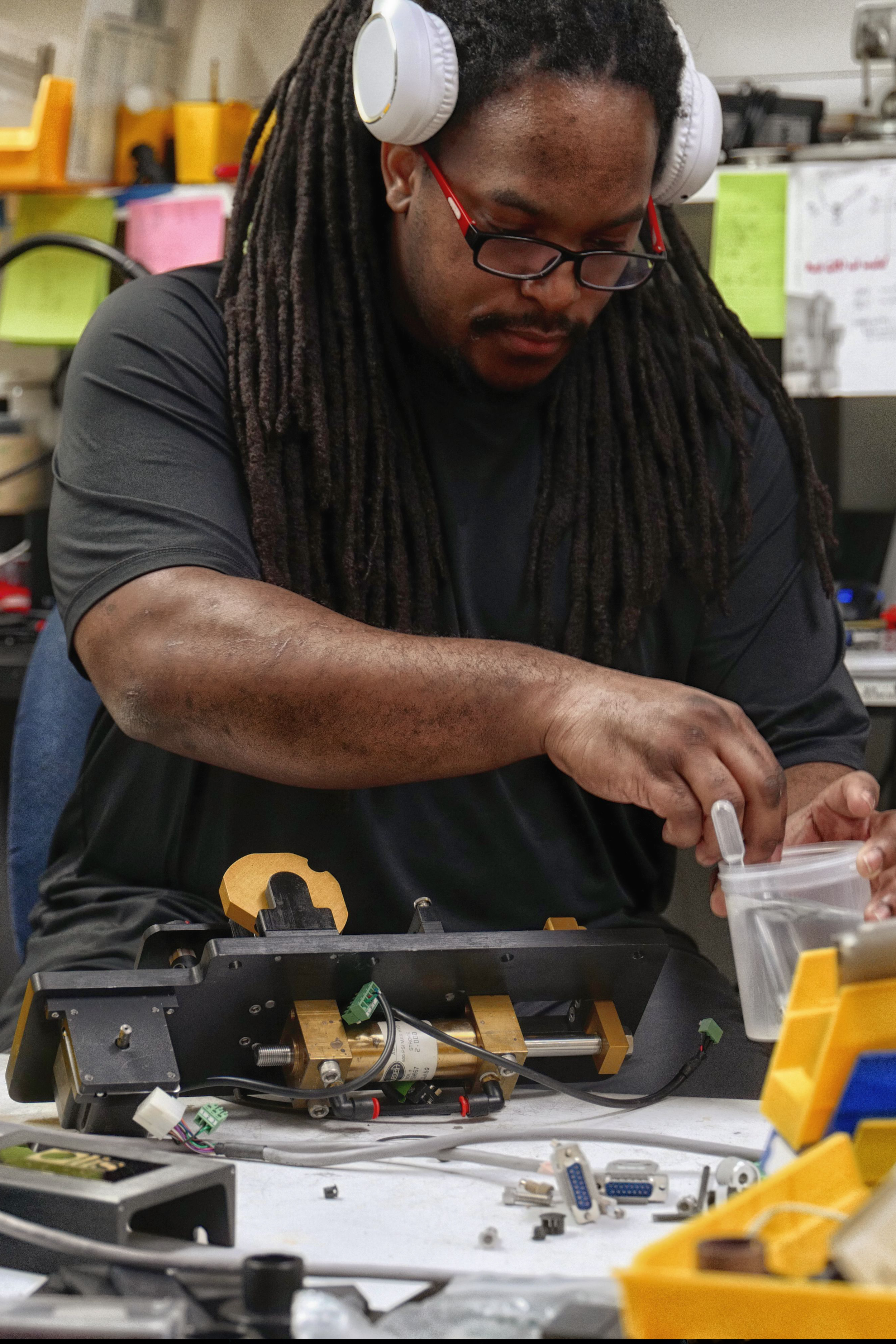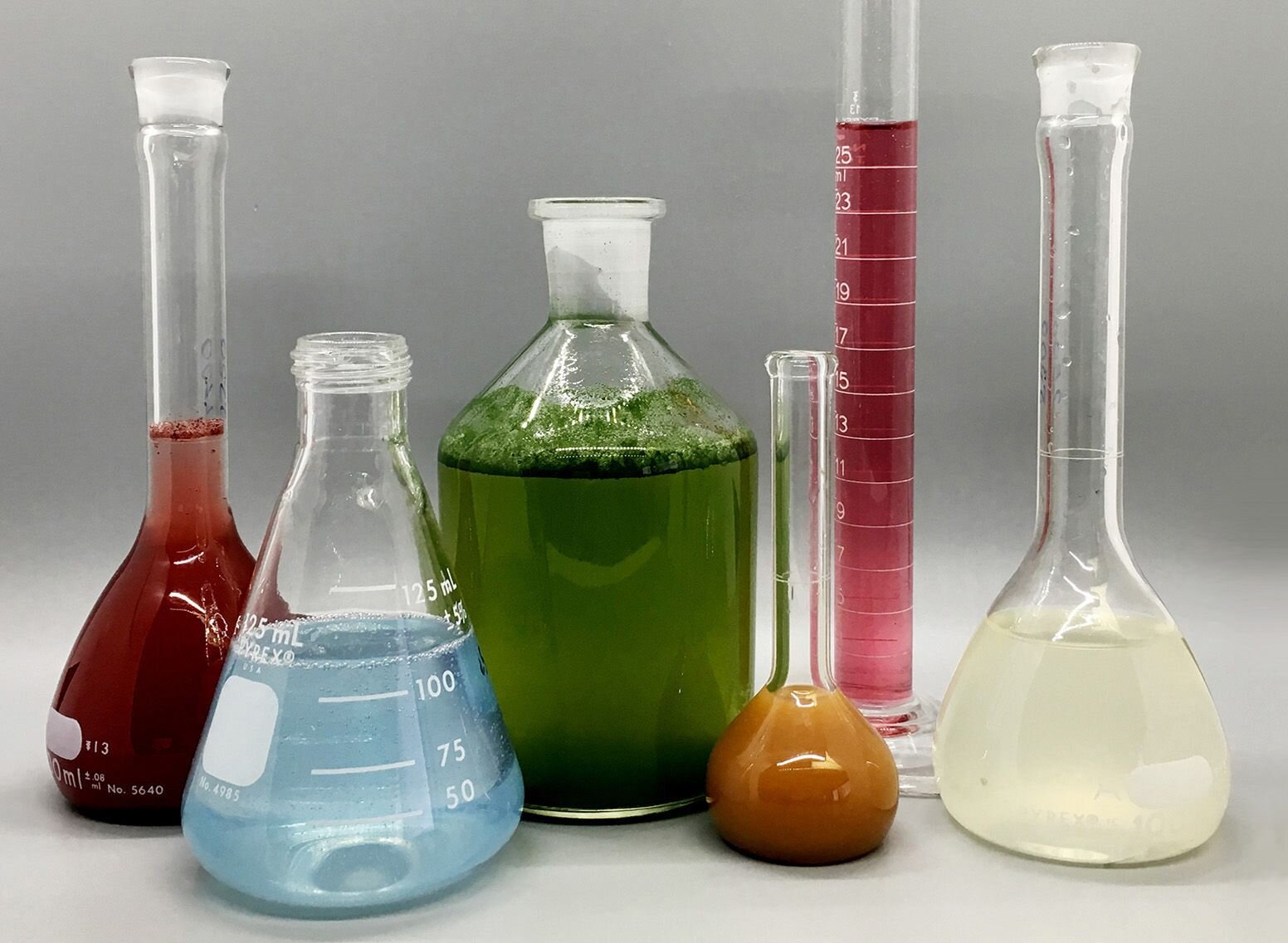Uv/vis Fundamentals Explained
Uv/vis Fundamentals Explained
Blog Article
Get This Report on Circularly Polarized Luminescence
Table of ContentsAbout Circular DichroismSee This Report on Uv/visThe Basic Principles Of Spectrophotometers Fascination About Uv/vis/nirUv/vis/nir for BeginnersGetting The Spectrophotometers To WorkSome Known Details About Spectrophotometers Rumored Buzz on Circularly Polarized Luminescence3 Simple Techniques For Circular DichroismCircular Dichroism Can Be Fun For EveryoneFascination About Circularly Polarized LuminescenceThe Buzz on SpectrophotometersSome Known Incorrect Statements About Uv/vis/nir
It is then scanned through the sample and the referral services. Fractions of the event wavelengths are sent through, or shown from, the sample and the recommendation. The resultant light strikes the photodetector gadget, which compares the relative strength of the two beams. Electronic circuits convert the relative currents into linear transmission portions and/or absorbance/concentration values.The transmission of a reference compound is set as a baseline (datum) value, so the transmission of all other compounds are tape-recorded relative to the initial "zeroed" substance. The spectrophotometer then converts the transmission ratio into 'absorbency', the concentration of particular elements of the test sample relative to the initial compound.
Given that samples in these applications are not readily offered in big quantities, they are especially matched to being evaluated in this non-destructive strategy. In addition, precious sample can be conserved by using a micro-volume platform where as low as 1u, L of sample is needed for complete analyses. A quick explanation of the procedure of spectrophotometry consists of comparing the absorbency of a blank sample that does not consist of a colored substance to a sample that consists of a colored compound.
The Only Guide for Spectrophotometers
In biochemical experiments, a chemical and/or physical home is picked and the procedure that is used specifies to that residential or commercial property in order to derive more information about the sample, such as the amount, purity, enzyme activity, etc. Spectrophotometry can be used for a number of techniques such as determining optimum wavelength absorbance of samples, identifying optimum p, H for absorbance of samples, identifying concentrations of unidentified samples, and determining the p, Ka of different samples.: 21119 Spectrophotometry is likewise a handy procedure for protein purification and can likewise be utilized as an approach to create optical assays of a compound.
It is possible to understand the concentrations of a two part mix using the absorption spectra of the standard options of each part. To do this, it is essential to know the termination coefficient of this mixture at 2 wave lengths and the extinction coefficients of options that consist of the recognized weights of the two parts.

A Biased View of Uv/vis/nir
Area. The concentration of a protein can be approximated by measuring the OD at 280 nm due to the presence of tryptophan, tyrosine and phenylalanine.
Nucleic acid contamination can also interfere. This method needs a spectrophotometer efficient in measuring in the UV region with quartz cuvettes.: 135 Ultraviolet-visible (UV-vis) spectroscopy involves energy levels that excite electronic transitions. Absorption of UV-vis light delights particles that remain in ground-states to their excited-states. Noticeable area 400700 nm spectrophotometry is utilized thoroughly in colorimetry science.
20. 8 O.D. Ink producers, printing companies, textiles vendors, and a lot more, require the information supplied through colorimetry. They take readings in the region of every 520 nanometers along the visible region, and produce a spectral reflectance curve or a data stream for alternative presentations. These curves can be used to test a brand-new batch of colorant to inspect if it makes a match to requirements, e.
The Ultimate Guide To Circularly Polarized Luminescence
Standard noticeable area spectrophotometers can not find if a colorant or the base product has fluorescence. This can make it tough to handle color problems if for instance several of the printing inks is fluorescent. Where a colorant consists of fluorescence, a bi-spectral fluorescent spectrophotometer is used (https://sketchfab.com/olisclarity1). There are two major setups for visual spectrum spectrophotometers, d/8 (round) and 0/45.
Scientists utilize this instrument to determine the amount of substances in a sample. If the compound is more concentrated more light will be soaked up by the sample; within small ranges, the Beer, Lambert law holds and the absorbance between samples vary with concentration linearly. In the case of printing measurements 2 alternative settings are frequently used- without/with uv filter to control better the impact of uv brighteners within the paper stock.
See This Report about Uv/vis/nir
Some applications need small volume measurements which can be carried out with micro-volume platforms. As explained in the applications area, spectrophotometry can be used in both qualitative and quantitative analysis of DNA, RNA, and proteins. Qualitative analysis can be utilized and spectrophotometers are used to tape spectra of compounds by scanning broad wavelength regions to figure out the absorbance residential or commercial properties (the strength of the color) of the substance at each wavelength.

The Greatest Guide To Uv/vis/nir
One significant factor is the type of photosensors that are offered for various spectral areas, however infrared measurement is likewise challenging due to the fact that virtually everything produces IR as thermal radiation, especially at wavelengths beyond about 5 m. Another problem is that several materials such as glass and plastic absorb infrared, making it incompatible as an optical medium.
2013. p. 13. Allen, DW; Cooksey, C; Tsai, BK (Nov 13, 2009). "Spectrophotometry". Retrieved Dec 23, 2018. Ninfa AJ, Ballou DP, Benore M (2010 ). Basic Laboratory Approaches for Biochemistry and Biotechnology (second ed.). Hoboken: Wiley & Sons. ISBN 9780470087664. OCLC 488246403. Schwedt G (1997 ). The essential guide to analytical chemistry.
Oke, J. B.; Gunn, J. E.
Examine This Report on Uv/vis

1021/ac50048a728. ISSN0003-2700. Ninfa AJ, Ballou DP, Benore M (2015 ). Essential Laboratory Methods for Biochemistry and Biotechnology (3, rev. ed.). Hoboken, NJ: Wiley & Sons. p. 77. ISBN9780470924525. OCLC915641828. "Totally Automatic Double Beam - Atomic Absorption Spectrophotometer (AA 8000)". Laboratory Equipment. Labindia Analytical Instruments Pvt. Ltd. "Spectrophotometry Applications and Principles".
Facts About Uv/vis Uncovered
Recovered Jul 4, 2018. Trumbo, Toni A.; Schultz, Emeric; Borland, Michael G.; Pugh, Michael Eugene (April 27, 2013). "Applied Spectrophotometry: Analysis of a Biochemical Mixture". Biochemistry and Molecular Biology Education. 41 (4 ): 24250. doi:10. 1002/bmb. 20694. PMID 23625877. (PDF). www. mt.com. Mettler-Toledo AG, Analytical. 2016. Obtained Dec 23, 2018. Cortez, C.; Szepaniuk, A.; Gomes da Silva, L.
"Exploring Proteins Filtration Methods Animations as Tools for the Biochemistry Mentor". Journal of Biochemistry Education. 8 (2 ): 12. doi:. Garrett RH, Grisham CM (2013 ). Biochemistry. Belmont, CA: Cengage. p. 106. ISBN 978-1133106296. OCLC 801650341. Vacation, Ensor Roslyn (May 27, 1936). "Spectrophotometry of proteins". Biochemical Journal. 30 (10 ): 17951803. doi:10. 1042/bj0301795.
PMID 16746224. Hermannsson, Ptur G.; Vannahme, Christoph; Smith, Cameron L. C.; Srensen, Kristian T.; Kristensen, Anders (2015 ). "Refractive index dispersion noticing utilizing a variety of photonic crystal resonant reflectors". Applied Physics Letters. 107 (6 ): 061101. Bibcode:2015 Ap, Ph, L. 107f1101H. doi:10. 1063/1. 4928548. S2CID 62897708. Mavrodineanu R, Schultz JI, Menis O, eds.
Unknown Facts About Uv/vis
U.S. Department of Commerce National Bureau of Standards special publication; 378. Washington, D.C.: U.S. National Bureau of Standards. p. 2. OCLC 920079.
The procedure starts with a controlled light that brightens the evaluated sample. In the case of reflection, as this light communicates with the sample, some is absorbed or emitted. The discharged light travels to the detector, which is evaluated, measured, and presented as industry-standard color scales and indices.
All terms are examined over the noticeable spectrum from 400 to 700 nm. In the case of transmission, when the light engages with the sample, it is either absorbed, reflected, or transmitted.
The Buzz on Circular Dichroism
Examples consist of APHA (American Public Health Association) for watercolor and pureness analysis, ASTM D1500 for petrochemical color analysis, edible oil indices utilized in food, and color analyses of drinks. The simplified math looks like this:. Where T is the transmission coefficient. All terms are assessed over the noticeable spectrum from 400 to 700 nm.
Image Credit: Matej Kastelic/ Dr. Arnold J. Beckman and his coworkers at the National Technologies Laboratories initially developed the spectrophotometer in 1940. In 1935 Beckman founded the company, and the discovery of the spectrophotometer was their most ground-breaking innovation. Dr. Bruce Merrifield, a Nobel prize-winning biochemist, stated that the innovation of the spectrophotometer was "most likely the most essential instrument ever developed towards the development of bioscience." Before the discovery of the spectrophotometer, chemical analyses took weeks to complete, with 25% accuracy.
Getting The Uv/vis/nir To Work
Over time, researchers kept enhancing the spectrophotometer style to boost its efficiency. The UV abilities of the model B spectrophotometer were improved by changing the glass prism with a quartz prism.
After 1984, double-beam variations of the gadget were developed. The addition of external software with the provision of onscreen screens of the spectra came in the 1990s. Normally, a spectrophotometer is made up of two instruments, specifically, a spectrometer and a photometer. A basic spectrophotometer contains a source of light, a monochromator, a collimator for straight beam transmission, a cuvette to put a sample, and a photoelectric detector.
Circular Dichroism Fundamentals Explained
There are various types of spectrophotometers in various sizes and shapes, each with its own function or performance. A spectrophotometer figures out just how much light is shown by chemical components. UV/Vis. It measures the difference in light strength based on the overall amount of light introduced to a sample and the amount of beam that goes through the sample solution
According to the instrument's design, the sample is put between the spectrometer and the photometer. After the light is passed through the sample, the photometer determines its intensity and shows the reading. A spectrophotometer is utilized to determine the concentration of both colorless and colored solutes in a solution. This instrument is used to figure out the rate of a response.
Report this page